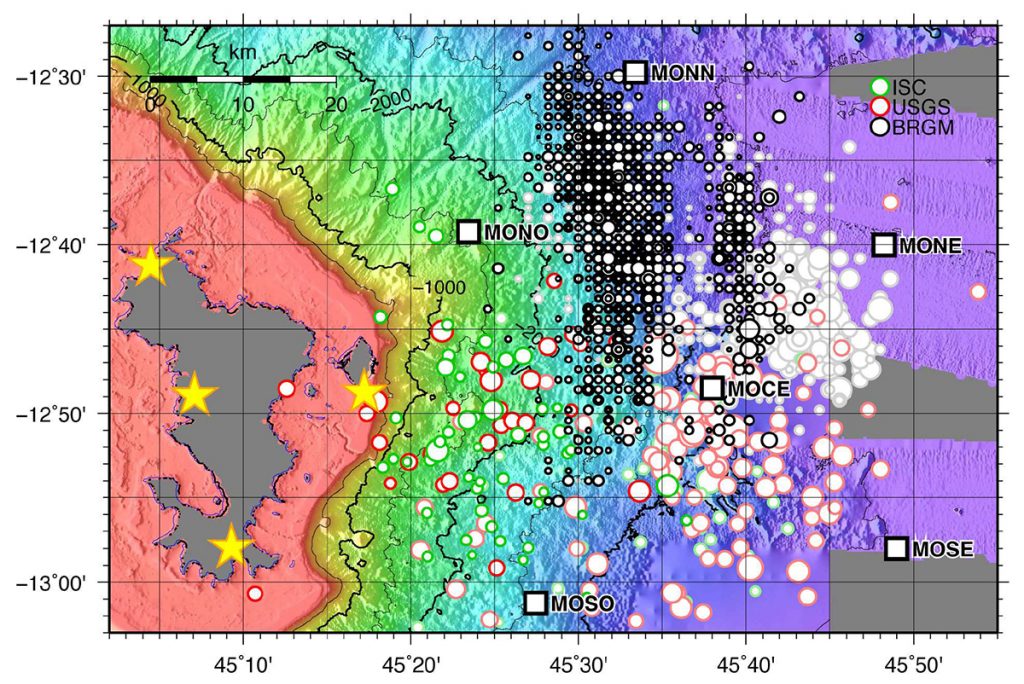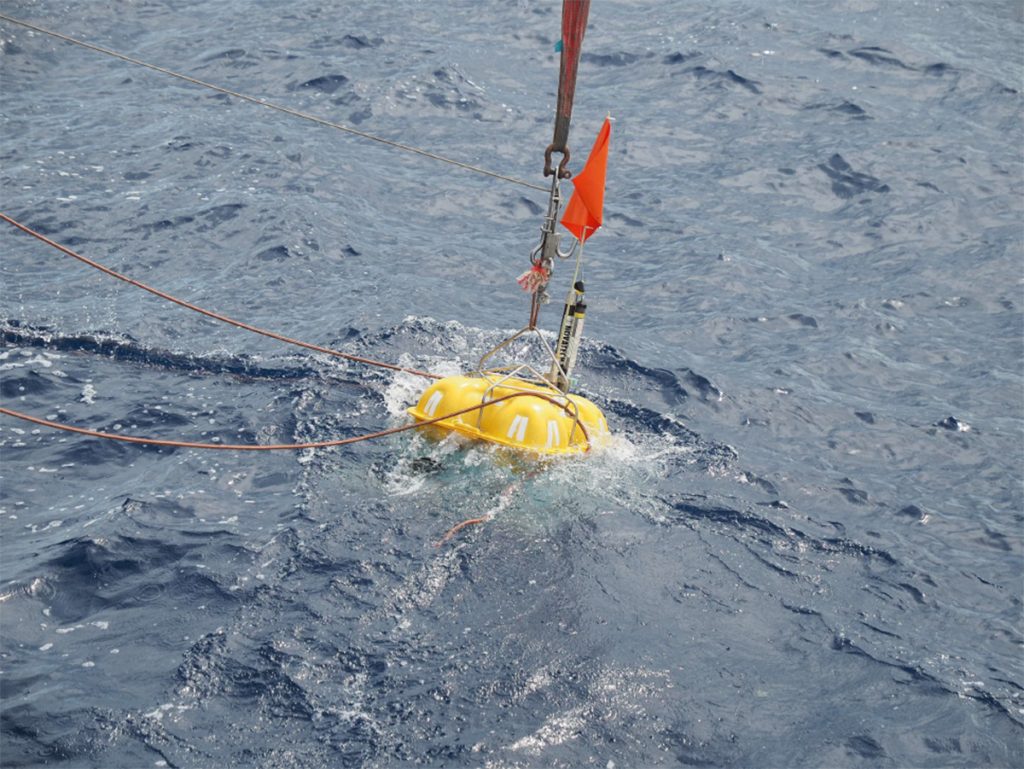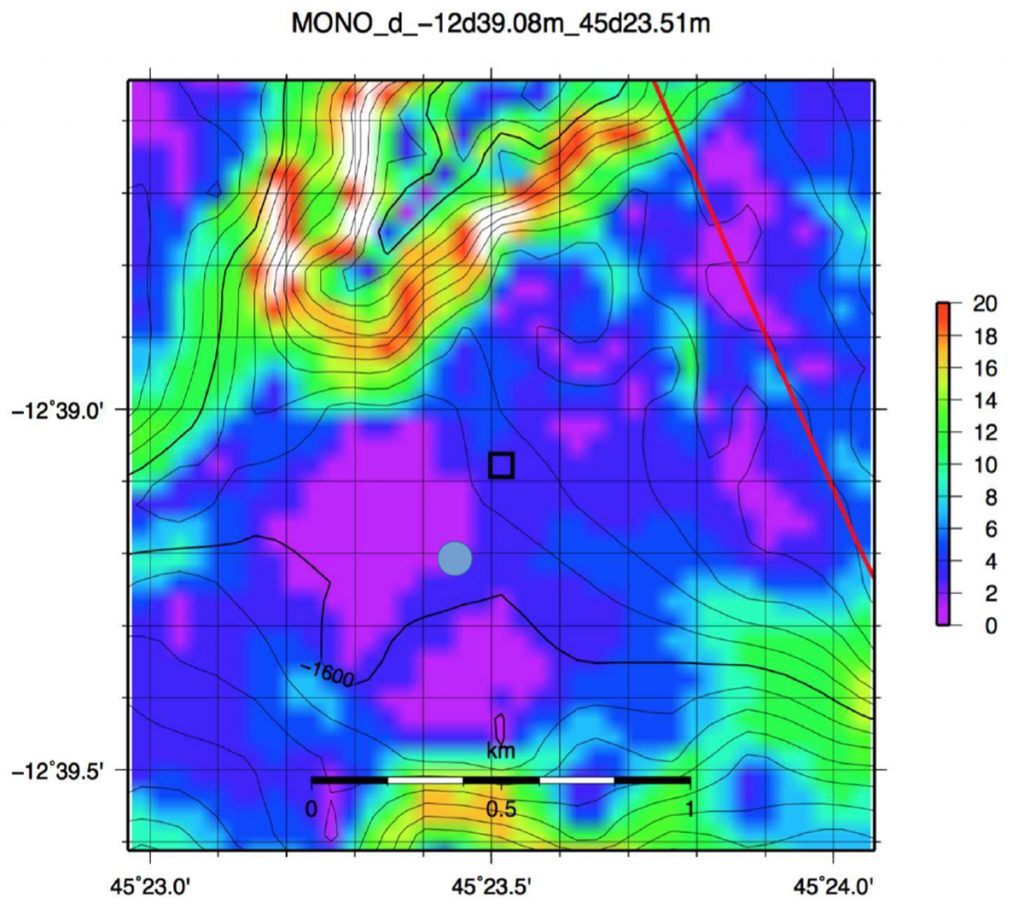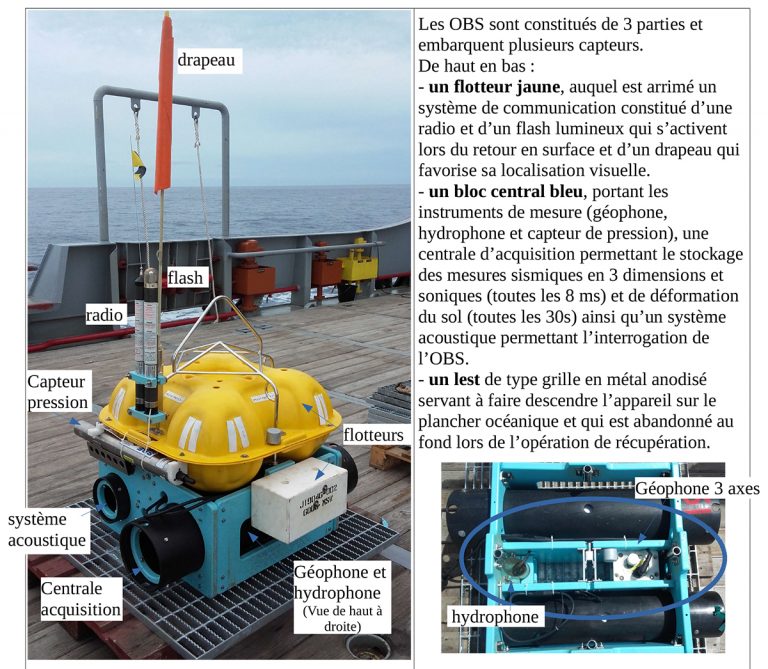“Tellus Mayotte” seismic mission at sea
The call for proposals, entitled "Tellus Mayotte", launched at the end of 2018, and comprising three major operations, two on land (Mayotte and Glorieuses) and one at sea, resulted in the selection of the partnership of several French research institutes (IPGP/IPGS/BRGM/LIENs/ISTerre/IFREMER). The mission described below corresponds to the first phase of the offshore mission. It was made possible thanks to the mobilisation of the cargo ship YLANG belonging to the Société de Gestion et de Transports Maritimes, which enabled the measurement equipment to be dropped at sea.
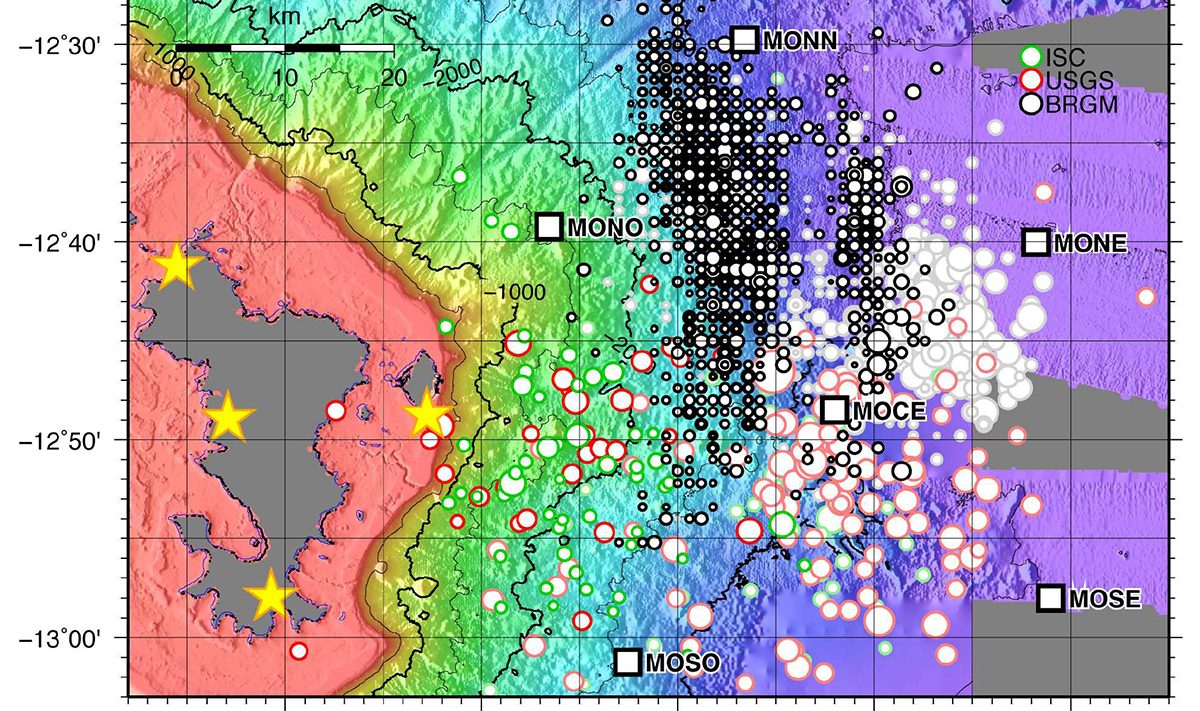
Publication date: 22/02/2019
Observatories, Press, Research
Related observatories : Volcanological and Seismological Monitoring Network of Mayotte (REVOSIMA)
Related teams :
Volcanic Systems, Marine Geosciences




